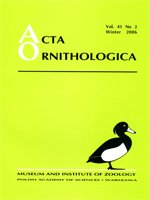Data are presented for the first time on the abundance and breeding ecology of the Brown Accentor in Lhasa, Tibet. During the non-breeding periods, the accentors occurred across a wide altitudinal gradient in a variety of habitats and remained numerically abundant. When breeding, they were restricted to alpine zones (> 4300 m) with scattered shrubs, and the population density declined to a low level (0.02 nests per ha). Nests were built partially in lone-standing short, thorny bushes and at a low height (< 0.8 m) above the ground. Dates of clutch initiation ranged from early May to mid-July, a period of 80 days. Clutch size varied between 2 and 3 eggs, averaging 2.9 (± 0.1). Eggs hatched after 13–14 days of incubation, and young birds fledged at 13–17 days, when they reached 97% of the adult weight. In terms of the proportion of clutches from which at least one chick fledged, breeding success was 56.3%. No evidence of multiple mating was found in this species.
How to translate text using browser tools
1 December 2006
Abundance and Breeding Ecology of Brown Accentors Prunella fulvescens in Lhasa, Tibet
Xin Lu

Acta Ornithologica
Vol. 41 • No. 2
December 2006
Vol. 41 • No. 2
December 2006
abundance
breeding biology
Brown Accentor
habitat selection
nestling diet
nest-site selection
Prunella fulvescens




